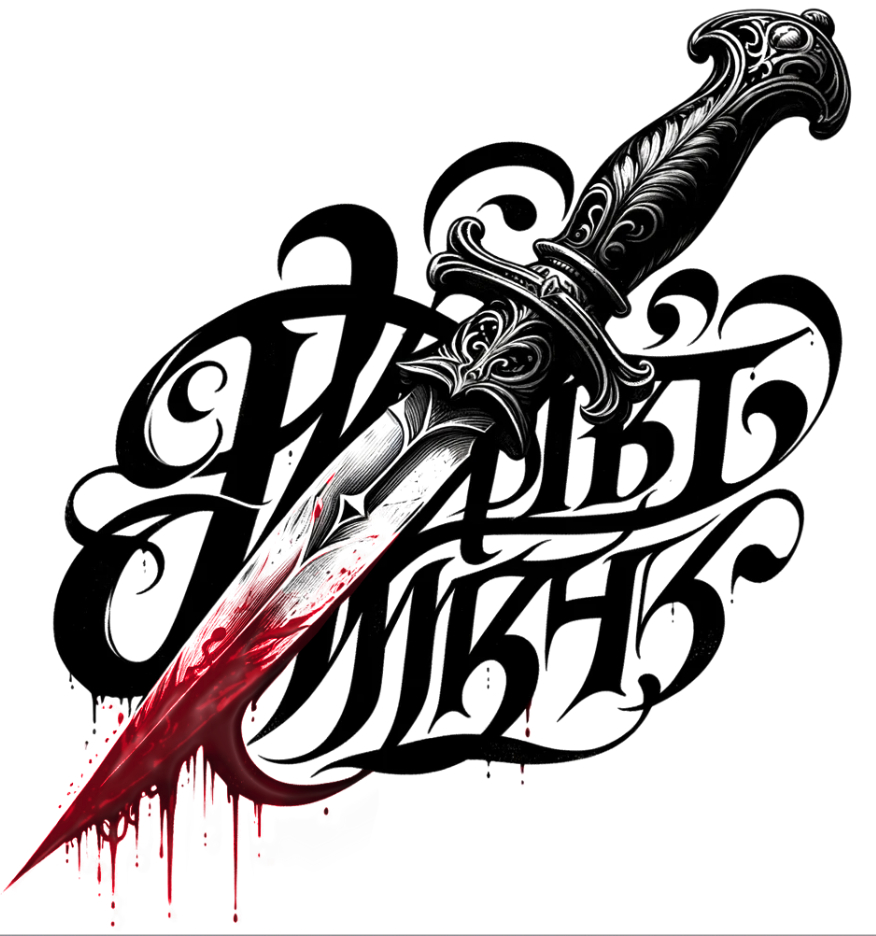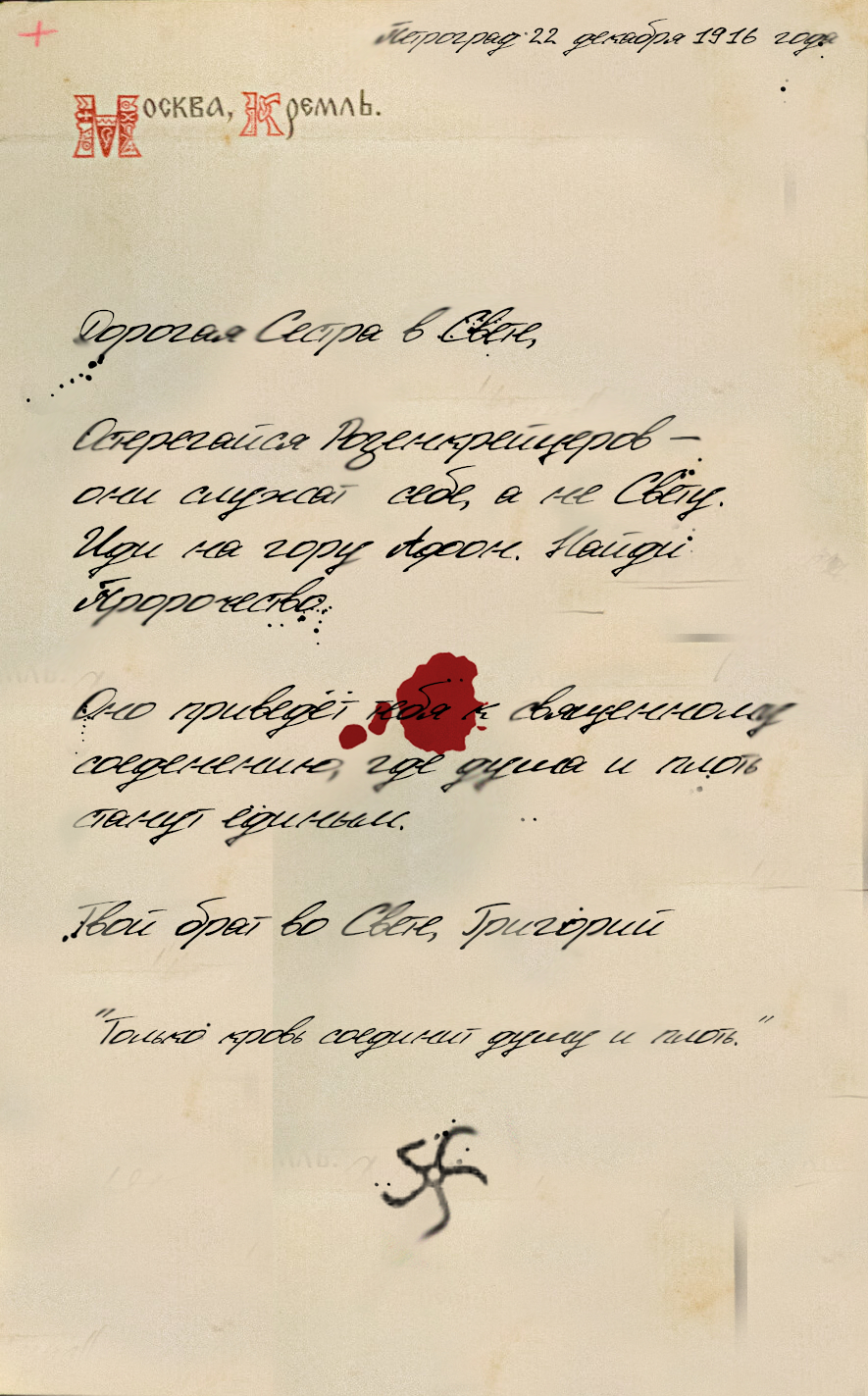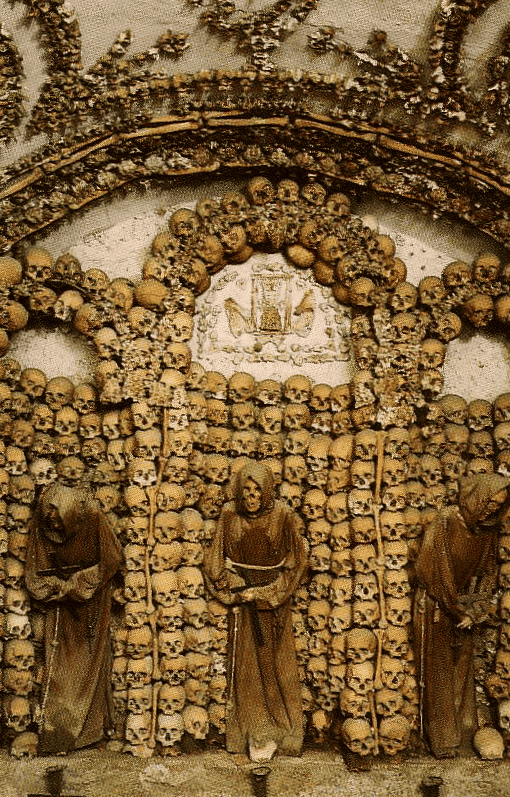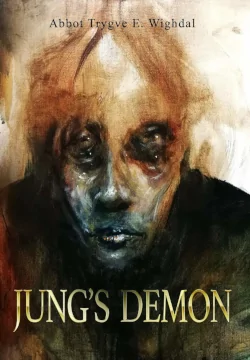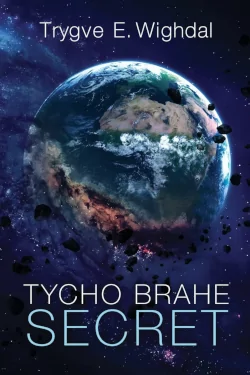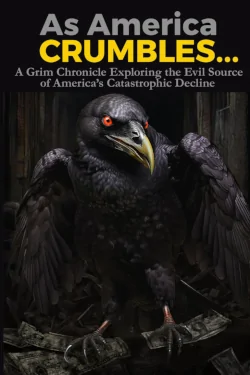The Soulreaper's Blade
(Private collection of Lev Nikolaevich Tolstoy, Count Tolstoy, 1868. Origin unknown.)
The original inscription—𓂸𓃱𓊎𓄇 𓆣𓉔𓋴𓆃 𓁩𓊮𓋴—was The Raven's signature, emerging from the tip of the dagger, creating the eerie impression that it was being written by the blade itself. Regretfully, the efforts of Morozov's tech team—using every trick from Adobe Photoshop, Skylum Luminar, Corel PaintShop Pro, and PixelCraft Studio—made it look stylized rather than menacing. Instead of a medieval harbinger of death, it now had the polished aesthetic of a corporate logo—as if the Democratic Party of the United States had rebranded it as their new emblem for pillage, death, and mayhem. The illustration had lost the patina and dread of the original, but some esoteric sense of foreboding still emanated from the image.
It must be said that despite erroneous historical records claiming that on July 17, 1918, Tsar Nicholas II, his family, and those who accompanied him in imprisonment were executed by Bolshevik agents with gunshots and bayonets at the Ipatiev House in Yekaterinburg, the truth was far darker. Nicholas II was murdered with a single, swift thrust to the heart by this very dagger—the blade that The Raven used to carve his signature. Among the Vory, the Soulreaper's Blade—as the dagger is known in both folklore and urban legend—is more revered than Gollum's "One Ring to rule them all" among American teenagers.
I was blown away. For the first time, I had encountered a tangible artifact that connected the legend of The Raven to a real historical figure—the elusive Mikhail Voronov. His signature and the arcane dagger in Tolstoy's private collection cemented the connection.
There was no mention of the Vory in Tolstoy's vast literary opus, yet I wondered: What if Tolstoy himself had been part of that dark, arcane organization whose silhouette was slowly taking shape before my eyes? I dismissed the thought as too wild—until I remembered: Tolstoy had rejected the organized Orthodox Church, developed his own radical Christian anarchist philosophy, and wrote The Death of Ivan Ilyich12 afterwards.

